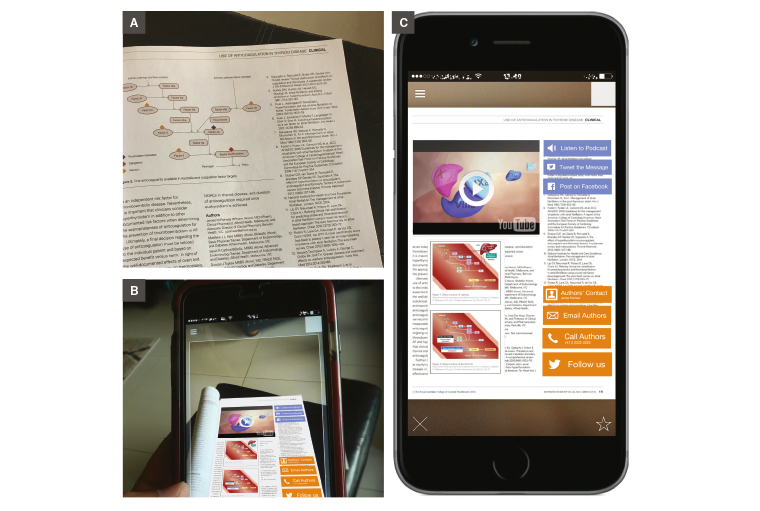The focus on digital versions of medical journals is increasing, but audiences still benefit from the printed versions. Practically, however, the amount and types of information that can be printed – word count and number of figures or tables – are limited and, ultimately, ‘static’. Considering the ever-increasing complexity of clinical topics that health professionals and patients are exposed to, this limitation decreases the chances of providing more comprehensive or innovative explanations of complex findings. Additionally, the two‑dimensional representation of information is not always suitable when illustrating complex structures, functions or interrelationship of concepts.
A valuable opportunity to consider for journals available digitally and in print is mixing the digital and print versions, and evaluating the possibility of enhancing the print version with augmented reality. As an innovative technology, augmented reality allows digital, ‘dynamic’ content to be visualised as information layers on top of print materials. The increasing adoption of augmented reality solutions on smart devices, pushed by major industry players, has resulted in promising implications for the enhancement of printed media, to increase the engagement of audiences for education and training.1,2
With the original layout kept intact, any printable media, including the print version of a journal, presentation, or continuous professional development (CPD) package, can be enhanced by augmented reality. Then, the enhanced pages will function as triggers to retrieve and visualise additional layers of digital information (Figure 1), which subsequently serve as a superior complement for readers. The enhancement provides opportunities for showing dynamic information (eg two-dimensional and three-dimensional audiovisual materials [eg animations, instructional videos, podcasts, image galleries], web-links to patient education materials, and/or social networking platforms) and extending readers’ engagement beyond traditional reading. For example, providing access to additional virtual images can reinforce the text by superimposing and revealing pathological changes, anatomical structures, and causes or differential diagnoses of visual clinical findings (eg a rash). This possibility can additionally extend user interactions with the online material. Mixing digital with print will also enable researchers, professionals, educators, patients and developers to expand the visibility and dissemination of research findings.
There is evidence to support the notion that augmented reality will extend readers’ engagement,3 which will be of high value for professional–patient communications. Most augmented reality apps also have user behaviour analytical functionalities, which enable the journal and authors to quantify the visibility of the enhanced pages. We look forward to a time when augmented reality is embedded alongside the print and digital content of the important journals we regularly read. This embedding can be initiated or managed by the editorial or publishing teams of journals and printed media, authors of the manuscripts, or third-party audiences of the publications.

Figure 1. Enhancement of a page in Australian Family Physician (AFP) by augmented reality
A. A page from an issue of AFP with no modification from the original
B. Scanning the page using a smart device (needs an augmented reality app) conveniently brings dynamic digital content as overlaid information
C. Top-left: a YouTube video about the topic of the article; bottom-left: an image gallery with extra relevant virtual images; top-right: interactive buttons for listening to a podcast, tweeting study’s message, or sharing a post on Facebook; bottom-right: networking with authors by calling or sending an email or saving contact information
Note: Based on the design, three-dimensional types of information such as animations, simulations, games and similar can also be included (not shown here for simplicity).